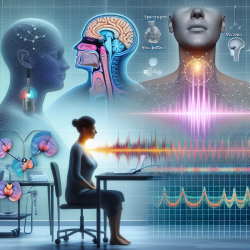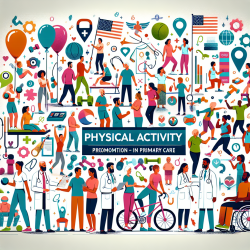As a practitioner in the field of speech-language pathology, it's essential to stay updated with the latest research to enhance your skills and improve outcomes for your patients. The recent case study titled "Persistent Neurological, Dissociative, and Amnestic Symptoms Following a Mild Traumatic Brain Injury in an Adolescent: A Complex Case of Conversion Disorder" offers valuable insights that can be applied to clinical practice. This blog will discuss how you can implement the findings from this research to better support adolescents with conversion disorder.
Understanding Conversion Disorder
Conversion disorder, also known as functional neurological symptom disorder, presents with neurological symptoms that cannot be fully explained by medical conditions. Symptoms may include motor, sensory, or cognitive dysfunctions and are often linked to psychological stressors.
Key Takeaways from the Research
The case study of a 17-year-old female with conversion disorder following a mild traumatic brain injury highlights several important points:
- Conversion disorder can present with a wide range of symptoms, including amnesia, motor dysfunction, and sensory disturbances.
- Thorough examination and continuous follow-up are crucial for accurate diagnosis and effective treatment.
- Family involvement and support play a significant role in the treatment process.
- A multidisciplinary approach, including cognitive-behavioral therapy and other psychological interventions, is often necessary.
Practical Applications for Practitioners
Based on the findings from this research, here are some practical steps you can take to improve your clinical practice:
1. Comprehensive Assessment
Ensure a thorough assessment of the patient's medical, psychological, and social history. This will help in identifying any underlying stressors or contributing factors.
2. Multidisciplinary Approach
Collaborate with other healthcare professionals, including neurologists, psychologists, and physical therapists, to provide a holistic treatment plan.
3. Family Involvement
Engage the patient's family in the treatment process. Educate them about the condition and involve them in therapeutic activities to support the patient.
4. Psychological Interventions
Incorporate cognitive-behavioral therapy, biofeedback, and relaxation training into the treatment plan. These interventions can help address the psychological aspects of conversion disorder.
5. Continuous Monitoring
Regular follow-up appointments are essential to monitor the patient's progress and make necessary adjustments to the treatment plan.
Encouraging Further Research
While this case study provides valuable insights, further research is needed to understand the complexities of conversion disorder fully. As practitioners, we should advocate for and participate in ongoing research to improve our understanding and treatment of this condition.
To read the original research paper, please follow this link: Persistent Neurological, Dissociative, and Amnestic Symptoms Following a Mild Traumatic Brain Injury in an Adolescent: A Complex Case of Conversion Disorder.










